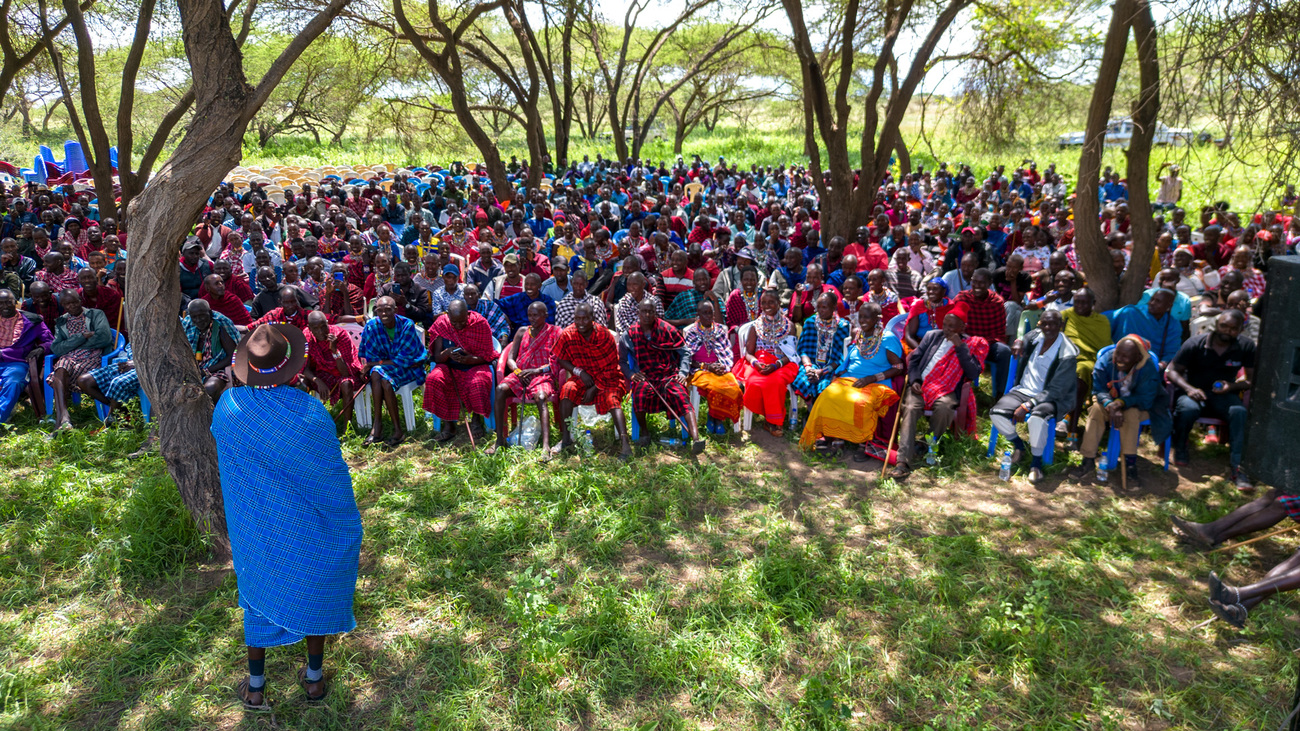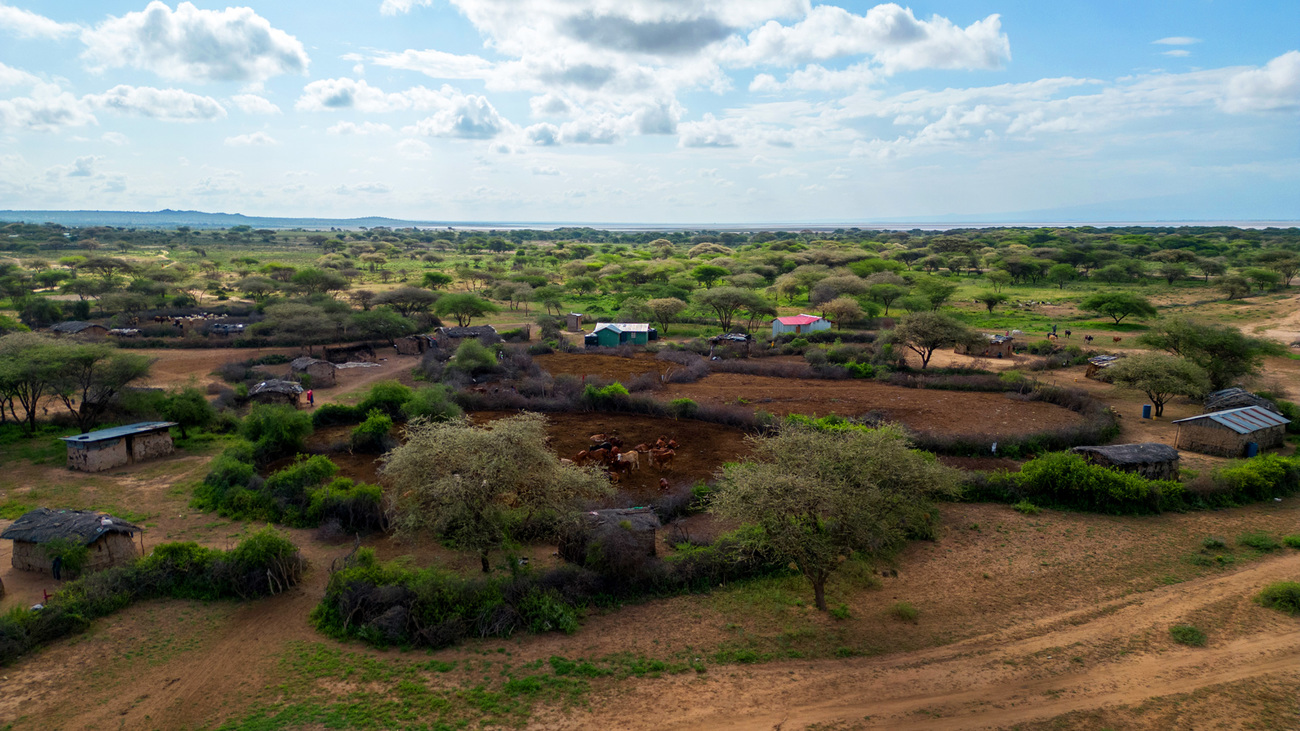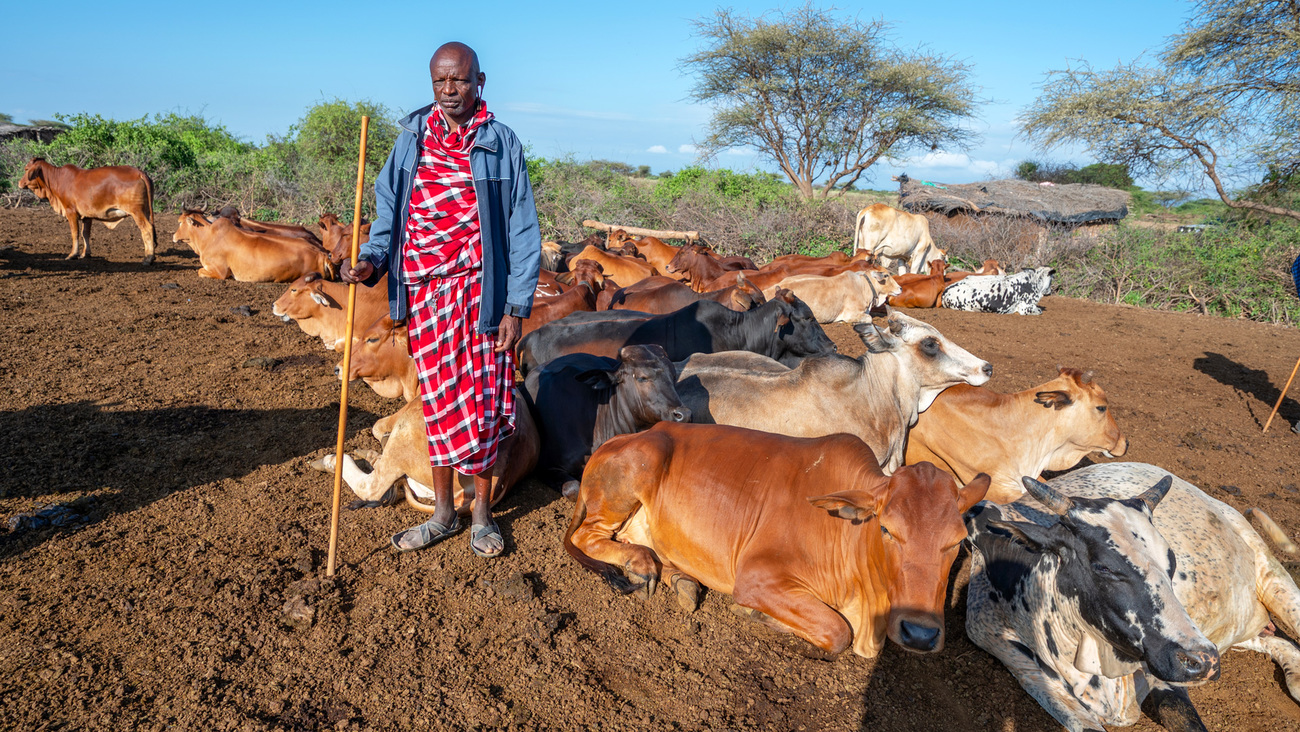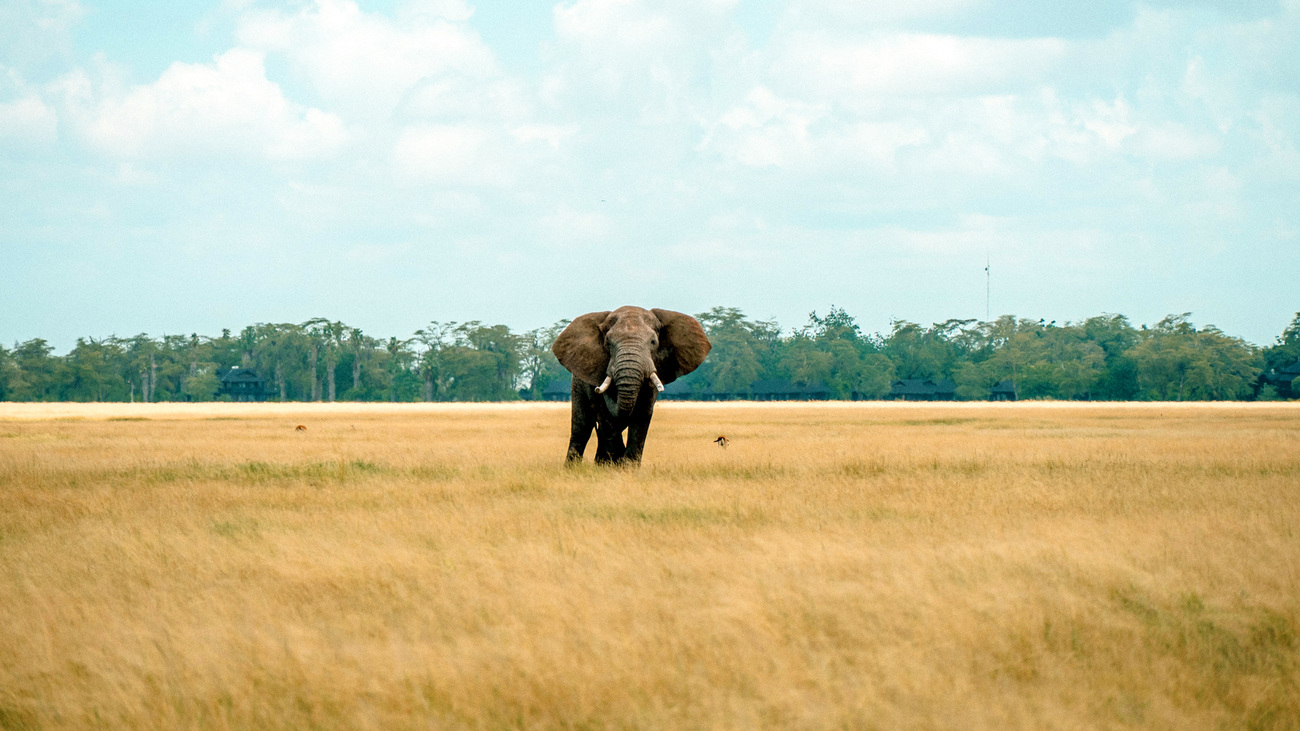Azzedine Downes
I have never been satisfied with just fighting the good fight. We need to actually make a difference.
How we work with the Maasai community to give wildlife room to roam
The Illaingarunyoni Conservancy is a vast, 29,000-acre stretch of stunning landscape northwest of Kenya’s Amboseli National Park. In the dry season, it’s so arid that you can't imagine animals live here; but when the rains come, it transforms into a verdant paradise.
Not only is Illaingarunyoni home to several rare species—such as pangolins, painted dogs, and bat-eared foxes—but it’s also the last natural gateway for 2,200 endangered African savannah elephants to move between Amboseli and the Loita–Maasai Mara ecosystem.
This land is critical for elephants. As megaherbivores that eat up to 150 kilograms of forage and drink up to 190 litres of water a day, they need to roam across large distances to survive. Amboseli National Park is too small for their needs. Every day they wander into the surrounding Maasai community lands in search of water and food.
As pastoralists, Maasai people have coexisted with wildlife for millennia, so they hold values that are already in line with how IFAW works to develop peaceful coexistence between humans and wildlife. Recently, though, there's been a generational shift in how they see land. The community has moved from viewing land as something no one could own to subdividing parcels, giving 10 acres to every community member. Individual owners could do what they wanted with their land, whether farming it, leasing it out, selling it for development—or putting it into conservation.
If they agreed to a conservation plan, individual landowners could no longer change how the land would be used. It would always remain in conservation, even if they sold it. Fortunately, the landowners made the critical decision to safeguard wildlife and communities into the future by establishing the Illaingarunyoni Conservancy.

The community-owned lands surrounding Amboseli provide a vital lifeline to both the Maasai and wildlife. Amboseli is simply too small for the animals that live there to survive if they have nowhere else to move. Land fragmentation and the collapse of migratory routes for wildlife are some of the major threats facing the Amboseli ecosystem. If the land is developed, then the elephants who need to travel across it no longer have safe room to roam. Not only does that endanger elephants, but it also brings humans and elephants into closer contact with each other, increasing the chances of human–elephant conflict, a situation that harms everyone.
The ranches already on this land also act as a dry-season refuge for Maasai livestock. Protecting these places helps strengthen community resilience during extreme weather events, such as droughts, which are increasing in frequency and severity due to climate change.
When the land was first parcelled off, it could have been sold in a matter of months. Once sold, it’s lost forever. And that would be a travesty not only for elephants but for all the species that depend on it—including us. The other corridors that connect Amboseli to Loita and Maasai Mara are already under incredible pressure to be sold for other purposes. At IFAW, we confronted the problem of how we could protect the land for the benefit of wildlife and communities.

This isn’t the first time IFAW has faced this issue. Over the past ten years, we worked with the Maasai community in the Kitenden Corridor, also near Amboseli National Park, to negotiate a lease that would benefit both the community and wildlife. Fortunately, community leader Daniel Leturesh—chairman of the Olgulului-Ololorashi Group Ranch, which surrounds Amboseli National Park—had a strong vision for the next generation not to sell off their land but instead to put it into conservation.
Part of Daniel Leturesh’s visionary approach is that the Olgulului-Ololorashi Group Ranch’s land-use plan mirrors the Paris agreement and the Kenya land use plan. These plans all aim to protect 30% of the Earth by 2030—often called 30x30—so we can prevent mass extinction, protect biodiversity, and make the planet more resilient to climate change.
Together we created the Kitenden Conservancy. We signed the lease agreement with thousands of landowners last year, securing a space where elephant, zebra, and giraffe populations can thrive. We were then able to attract private investment, which allowed us to turn our sights to protecting Illaingarunyoni. Thanks to the success of the Kitenden Conservancy, we had a model to follow.
Our first step was to secure the space, setting it aside legally as a conservancy association. That means that—again under the leadership of Daniel Leturesh—the landowners of the Olgulului-Ololorashi Group Ranch have formally agreed not to sell their parcels but to lease it to us for conservation, creating the Illaingarunyoni Conservancy.
Then we needed to protect the space, ensuring rangers have what they need to protect wildlife from poachers and other threats from the very beginning. Thanks to our partnership with David Rio, we opened the David Rio ranger base in September.
Once the space is secure and free of poaching, wildlife populations will use it. Animals make their own decisions about where to roam. We're not deciding for them; we're making a place safe for them, knowing that safety will make it more likely they will move there.
The next step is to improve infrastructure to encourage tourism. The community can still earn a living from the land they own, but in a way that benefits both them and wildlife. We need to build roads and tourist facilities, but we will only do so after discussions with the community about the kind of tourism they would like to see on their land. Kitenden, for example, wanted very exclusive, high-end low-impact tourism, which will guide some of the infrastructure investment decisions.

There are, of course, other conservation models, one of the most common being the national park system. As beautiful and important as national parks are, their static nature unfortunately doesn’t fit the reality of what we are facing with climate change.
Over the coming years, we expect much more movement of wildlife and people. The places that needed to be protected for the last hundred years may not need protection in the future, but new places will.
We believe a community-based conservation model is so important because it is the future of conservation. The days of people being locked out of the national park—and animals being locked in—while a distant national government makes decisions that affect the local community, are over. A perfect example of the direction we should be heading is a recent decision by Kenya’s president, William Ruto. He announced last August that management of Amboseli National Park will return to the Kajiado County government, which hosts the park.
Local communities always need to be central to conservation decisions. That’s one reason why a conservancy is the best model for spaces like Illaingarunyoni, and it’s why we work directly with the community’s leadership.
The life expectancy of an elephant is long—60 to 70 years. Conservationists need to be planning decades into the future while also looking at what will protect species in the next few years.
When IFAW developed our visionary Room to Roam initiative, we knew we had to think long term. Backed by decades of scientific research and conversations with local communities, Room to Roam is conserving wild landscapes that had become fragmented or were at risk of becoming so.
One of the misconceptions about Room to Roam is that we're creating a wildlife highway, so elephants can walk from Kenya down to Zimbabwe. That's not what we're doing. But protecting Illaingarunyoni will allow wildlife to move uninterrupted over a vast distance, all the way from Amboseli to Loita and Maasai Mara. That’s why the scale of the landscape is critical.
Creating connectivity on this scale requires a long-term commitment. The Kitenden Conservancy took over ten years to bring to fruition. First we had to negotiate the original lease and to discuss how land-leasing engagements work with the landowners. Then we developed management structures, governance, roads, and systems to attract investors for tourism. The investor, Conservation Equity, signed a 25-year lease agreement with the landowners last year.
The Illaingarunyoni Conservancy will also take time and investment, and so will other landscapes that are currently in danger of becoming fragmented.

Visionary programmes such as Room to Roam require strong collaborations and partnerships with communities, governments, other conservation agencies, and investors. We all work together not only to achieve conservation success but also to protect human welfare.
Because the bottom line is that saving biodiversity is saving the planet is saving ourselves. If you have wildlife, you have good soil. If you have good soil, you have good trees. If you have good trees, you have clean air. The direct links between a healthy planet and healthy communities play out in countless ways.
Our survival requires us sharing the planet. Are you willing to share the planet and protect other species? If the answer is no, then, ultimately, humanity will kill itself. But if the answer is yes, then we must work together to save ourselves.
Azzedine Downes
I have never been satisfied with just fighting the good fight. We need to actually make a difference.
Our work can’t get done without you. Please give what you can to help animals thrive.
Unfortunately, the browser you use is outdated and does not allow you to display the site correctly. Please install any of the modern browsers, for example:
Google Chrome Firefox Safari